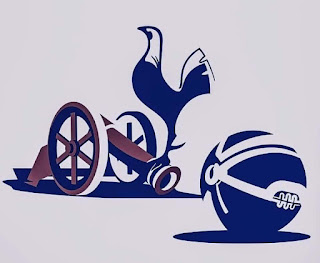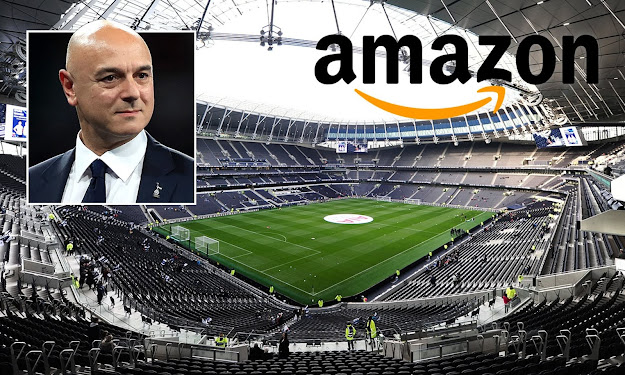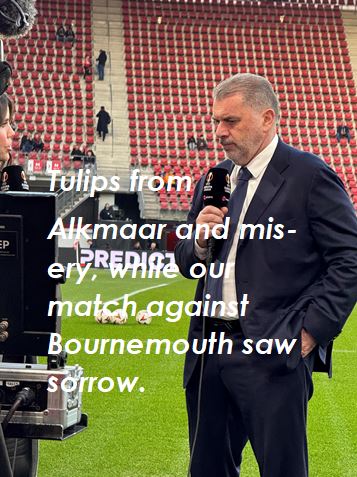Spurs v Arsenal: the North London Derby (a potted history).
Spurs v Arsenal:
the North London Derby (a potted history).The beginnings of a bitter rivalry,
and what Arsenal’s name really stands for.
By Don Scully
As you wise and educated Spurs supporters know, the North London derby
is the local rivalry between arsewipes and a Spurred-cockerel. This derby is
considered by both sets of supporters to be one of the most famous and fiercest
derbies in Europe .
Both teams first played each
other in Queen Victoria's reign, 1887; however, our Spurs anger towards the Gunners
did not begin until the year 1913 when the sneak thieves slid into our territory
in the middle of the night to spread their venom. They based themselves in the
neighbouring borough of Haringey. Which is four miles from our illustrious and
state of the art stadium. As for Spurs, the club was born and bred in North
London. It is a product of its environment, unlike the Arsenal Cuckoos.
Early matches
The first meeting between the two teams was a friendly (and why not? We
didn’t know then what we know now.. what sneak thieves they turned out to be).
Anyway, this friendly game was played on 19 November 1887; then the Gooners were
located in Plumstead (part of Kent but now in Greater London) and were known as
Royal Arsenal (Arsewipes). That match was played at the then Spurs ground at
Tottenham Marshes, which was eventually abandoned 15 minutes before it was due
to end "owing to darkness" with us leading 2–1. The first completed
match between the two teams was held the following February in Plumstead; Tottenham
could only field nine players and were thus beaten. Another notable game was in
1898 played at the Spurs ground at Northumberland Park. That match was with the
then-named Woolwich Arsenal (still arse-wipes though), which was attended by a
record crowd of 15,000. The following year we moved a short distance to what
would become known as the legendary White Hart Lane ground (sadly no longer,
but a phoenix rose up in its place and deposited a money-making palace).
The first League match between the clubs was in the First Division, on
4 December 1909.
A brief history of
the vipers in the Woolwich-nest (or more precise, a Clockwork-Orange-Dial).
1886–1919: Changing
names and the vipers prepare to strike and move from the nest.
In October 1886 a shifty-money-tingling-Scotsman called David Danskin, and fifteen fellow munitions workers in Woolwich’s ammunition dump formed a football team and called it Dial Square (very imaginative, named after a bloody Sun-dial clock) Football Club. However, they were not satisfied with being named after a bloody Sun-Dial-cuckoo-clock, so, they huddled together to come up with an alternative, they changed their name to the more pretentious Royal (for Christ sake, they were from Woolwich, not bloody Royal Berkshire) Arsenal a month later.
Now a lesson in the meaning of the word “arsenal”. For those who believe the name “arsenal” is a football clubs name… think, again. The dictionary definition of the word “arsenal,” says; a government establishment where military equipment or munitions are manufactured. A collection or supply of weapons or munitions. In other words, it was a holder of Death and destruction; Arsenal is a collection of firearms that kills; massacres and annihilates millions (nasty!). Why name a football team after death? What were the sick minds thinking of at that time? They didn’t need a football team but a couple of psychiatrists. I assume working in or near an ammunition depot must have affected/ warped their brain cells (that is the few they had).
If you go to their current stadium (if you can call it that!), you will
see a Cannon – yes, a cannon - sitting outside their front entrance (as their
emblem). Yes, a bloody killing machine. One would have thought that they would
have learnt the lessons of history? What sort of message does that send out to
the young and the vulnerable or even to society? While Spurs emblem is a
cockerel, a cockerel that fertilises a hen, in other words, it creates or
contributes to Life, unlike the Arsenal that kills or is prepped for killing.
Bastards! It is certainly not fit for a modern and politically correct society.
They are named after “Death”. Yes, “Death”. Henceforth they will be known as
Death and forevermore. As for their supporters' collective name, how about the
Grim Reapers? Didn’t they do a song about their fans called “The Monster Mash”?
That’s it, by Bobby “Boris” Pickett and the Crypton Kickers. Their history in a
nutshell. While we had Chas & Dave singing about Spurs triumphs and beating
Arsenal 3-1 on our way to Wembley in 1991… but that is another story.
Royal Death F.C.'s first home was in Plumstead Common (common being the
operative word); though they spent most of their time in South East London
playing on the other side of Plumstead, at the Manor Ground.
Royal Death renamed themselves for a second time (stability wasn’t in
Deaths vocabulary) upon becoming a limited liability company in 1893. They
registered their new name, Woolwich-Death (Arsenal), with The Football League
when the club ascended later that year.
Woolwich-Death was the first
southern member of The Football League, starting out in the Second Division and
winning promotion to the First Division in 1904. Unethical businessmen Henry
Norris and William Hall became involved in the club and sought to move them
elsewhere (Uranus would have been preferable… very favourable atmosphere for
arse-wipes).
So why did they move from Woolwich to Highbury? Probably they wanted to
compete with the best, and the best certainly wasn’t at Woolwich (in those days
it stunk to high heaven). Even though Highbury wasn’t that brilliant an area,
at that time (not that brilliant now, either), it certainly was better than a Sun-Dial-clock-work-ammunitions
dump in Woolwich. Anybody who named themselves after Death wasn’t going to
concern themselves with poaching another's space.
In 1913, soon after relegation back to the Second Division, Woolwich
Death, the sneak thieves, moved to their new Highbury hole, yes, North London
(our territory). This saw their third change of name (not again, what is it
with name changes and words with “arse” in it?): the following year, they
reduced – again! - Woolwich Death to simply, The Death or ammunition depot
(arsenal, for short).
Eventually, they dropped (changed again!) “The” from ammunition depot/
Death, “The Death” name, to become just merely Death (“arsenal”). Got it!? No
wonder they took up the colour of red, to match the Devils complexion.
Beginning of the rivalry
between the Givers of Life, and the Take-awayers of Life.
As stated above, the real rivalry began in 1913. This move was resented and opposed by the Tottenham board and fans as we considered Highbury our territory. This move made Death and Life a natural local rivalry (and it would be forevermore… until hell freezes over). The two teams first faced each other as "north London" rivals in a War Relief Fund friendly (I would have stopped using the word friendly were Death was concerned) on 22 August 1914 at White Hart Lane. Although Death were in the Second Division and we in the First. Both teams would go on to meet regularly during World War I in the London Combination, the regional wartime competition of the time. War/ death being synonymous with Arsewipes.
It is worth pointing out again, to show you what sneak thieves Death
are; our rivalry escalated in 1919 when, after World War I (again, a war), the
First Division was to be expanded by two teams. The League held a meeting of the
clubs to decide the two teams by employing a vote. 19th-placed Chelsea, who
would otherwise have been relegated, were allowed to stay and thus they took
the first of the two spots. The second spot should have been awarded to
20th-placed Spurs, or even Barnsley, who had finished third in the Second
Division. Still, Arsenal/ Death (along with four other clubs’) also bid for the
place, despite only finishing sixth in Division Two (yes, sixth). Death won the
vote by eighteen votes to Spurs' eight (Barnsley got five, Wolves four,
Nottingham Forest three, Birmingham two and Hull City one) and Death thus was elected
to the First Division by jiggery-pokery. The Deaths unscrupulous chairman Sir Henry Arse-wipe-Norris
used underhand dealings to bring this about. We, ourselves, had been selected
to join the Football League Second Division eleven years prior, after finishing
7th in the 1907–08 Southern League, but then it involved entirely separate
leagues that did not have automatic right to move between them. It also should
be remembered that we were in existence a lot longer than Death. Put all this
together, and you’ve got fraud and sleaze.
Despite the theft of our rightful position, we were soon promoted back
into the top flight after taking the 1919–20 Second Division title (and back to
derby battles). The first fully competitive derby match after Deaths 1913 move
to north London was a First Division match that finished 2–1 to us, on 15
January 1921 at White Hart Lane. The early conflicts between the two were noted
for their bitterness - a particularly vicious match in September 1922 led to
both clubs being censured by the Football Association and threatened with
future games being played behind closed doors. Why were we reprimanded? It was
Death again up to their old tricks.
We played in the Second Division between 1928 and 1933 and 1935 to
1950, while the sneak-thieves, Death, continued playing in a league they hadn’t
rightly earned their right to be in.
During World War II Tottenham generously allowed Death to use our ground (as their stadium was used for… wait for it… war purposes, and was bombed for their troubles, seems kind of poetic justice, doesn’t it?) however, when we needed a base while our new stadium was being built, Death put two fingers up at us, and therefore we were forced to use Wembley stadium… and to be fair, Wembley was a palace compared to their shit hole of a stadium. And Wembley is a shit hole compared to our stadium, which is the world’s best arena.
So, now you know how our rivalry started and the true meaning of the
name Arsenal. Don’t let any sneak thief tell you differently… Grim Reapers only
want your soul, they are not a giver of truth or fair play (if they were, they
wouldn’t wear Lucifer’s colours).
Remember our name and what it stands for… we are proud, we are Spurs
(we are a giver of Life)… No death armoury represents us. COYS!
Highest attendances
Tottenham 1–0 Arsenal; 83,222 (10 February 2018); Wembley Stadium (Tottenham home)
Tottenham 1–1 Arsenal; 81,332 (2 March 2019); Wembley Stadium (Tottenham home)
Tottenham 3–1 Arsenal; 77,893 (14 April 1991); Wembley Stadium (neutral)
Tottenham 0–1 Arsenal; 76,263 (4 April 1993); Wembley Stadium (neutral)
Tottenham 1–4 Arsenal; 69,821 (10 October 1953); White Hart Lane (Tottenham home)
















Comments
Post a Comment